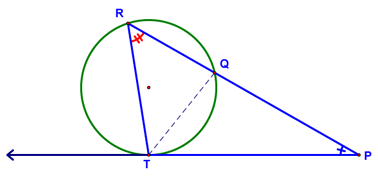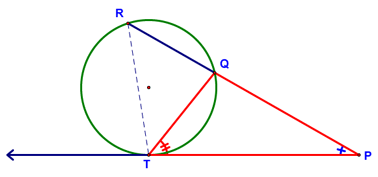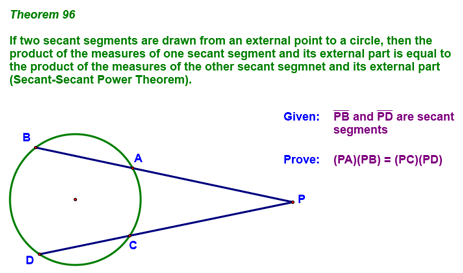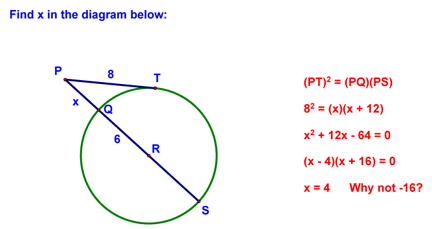 |
| you are here > Class Notes - Chapter 10 - Lesson 10-8 | |||||||||||||||||||||||||||||||||||||
|
The Power Theorems - Lesson 10-8 Today we learned a number of cool theorems (called the Power Theorems...sounds cool, huh?) that are based on similar triangles. The first is shown below and should be pretty straight forward to understand if you look at proving the two triangles similar (which, of course implies that corresponding sides are proportional):
The second power theorem is show below:
roving the Tangent-Secant Power Theorem is a little more difficult, but still involves similar triangles. The key is to draw in the two auxiliary lines shown below (segment RT and segment QT):
Note that angle R and angle QTP are congruent (why?) and that angle P is in both triangles RTP and QTP. With this information, you should see that the triangle below (Triangle RTP)
and the the triangle TQP shown below are similar.
Since The last power theorem (the Secant-Secant Power Theorem) is shown below:
This theorem is proved using the two triangles shown in the diagram below. You should be able to figure this one out!
We finished by doing the following example problem and then reviewing homework:
|
|
||||||||||||||||||||||||||||||||||||







